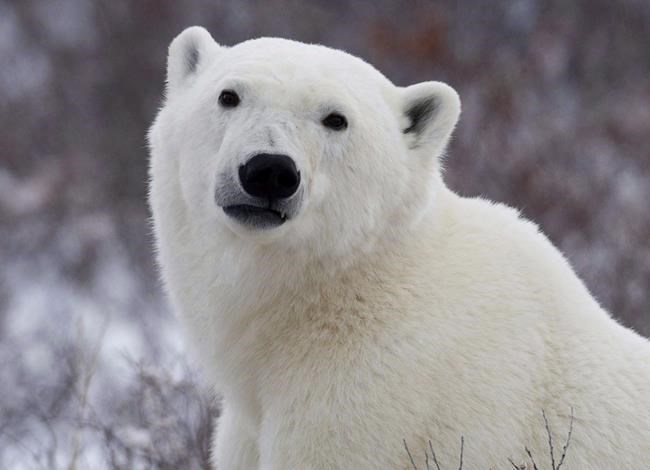
A polar bear is shown near Churchill, Man., Wednesday, Nov. 7, 2007. Two injured Inuit hunters huddled for three days with the body of their friend who was killed by a polar bear, while at least four other bears circled their camp.
Image Credit: THE CANADIAN PRESS/Jonathan Hayward
August 29, 2018 - 8:00 PM
Two injured Inuit hunters huddled for three days with the body of their friend who was killed by a polar bear, four other bears circling their camp.
"They had to sit tight," said Rob Hedley, administrator for the hamlet of Naujaat, Nunavut, where the hunters were from.
"It was pretty scary. They didn't sleep and they were out there for a while."
Nunavut's second polar bear death this summer sparked widespread outrage Wednesday among Inuit, who feel their lives are being endangered by hunting restrictions imposed by southerners.
The hunters left Naujaat on the northernmost shore of Hudson Bay on Aug. 21 to hunt narwhal and caribou. They were expected home on Thursday.
Police said they were notified when the trio hadn't shown up by Sunday.
A search began Monday with federal, territorial and local teams. Although rescuers knew roughly where the hunters were headed, search boats were blocked by heavy sea ice.
The Coast Guard icebreaker Louis St. Laurent joined the search and its helicopter found the hunters early Tuesday about 100 kilometres east of Naujaat near Lyon Inlet.
"It looks like it was a mother and a cub," said Hedley. "The mother and the cub were killed.
"(The hunters) killed at least one more. There were multiple other bears in the area that were attracted by blood and scent."
The two injured hunters weren't badly hurt and were treated and released.
In early July, an Arviat man was killed when a bear appeared during a family outing on an island near the community. Aaron Gibbons, 31, died after he placed himself between the bear and his children, who were able to run to safety.
Social media was alive Wednesday with posts from one end of the Arctic to the other expressing anger over the deaths. Inuit have long held that they're having more interactions with bears on the land.
"I can't even describe the pain we're feeling right now," said Helena Malliki from Naujaat.
Quotas that limit the numbers of bears that can be killed in each region prevent Inuit from thinning the population, she said.
"Those (bears) could have been caught if we didn't have these laws from the government," she said.
"(Bears) are in our land and they are very, very dangerous. I just want Inuit to kill all the bears they see."
Gordy Kidlapik of Rankin Inlet — Aaron Gibbons's uncle — said polar bears have always presented a threat. But it's different now.
"The past few years, sightings and encounters have been rising. We're at a different level now.
"The guys I've been talking to say the bear population is at a level where it's safe to not have a quota."
Inuit have managed their wildlife successfully for generations, said Shelly Woodford from Rankin Inlet.
"We always treat the animals with respect. We're not going to go overboard."
Andrew Derocher, a polar bear biologist at the University of Alberta, pointed out that quotas are set in Nunavut after consultation with hunters.
He warned that without careful management of the animals, the international community would be likely to ban exports of polar bear products and trophies from Canada, wiping out important income for Inuit.
That could leave Inuit killing even fewer bears, much like when the European ban on seal fur destroyed that market.
"The seal harvest dropped dramatically," Derocher said.
He argued quotas aren't the problem. Local hunters didn't even take their allotted 100 bears last year, he said.
The Foxe Basin bear population around Naujaat has lost about 30 days of sea ice cover over the last several decades in the area where it hunts.
"Bears start to move ashore," Derocher said. "Once all those bears are on shore, the likelihood of them coming into conflict with people increases.
"The ecosystem is changing. People in polar bear habitat have to look at changing some of their behaviour."
— Follow Bob Weber on Twitter at @row1960
News from © The Canadian Press, 2018